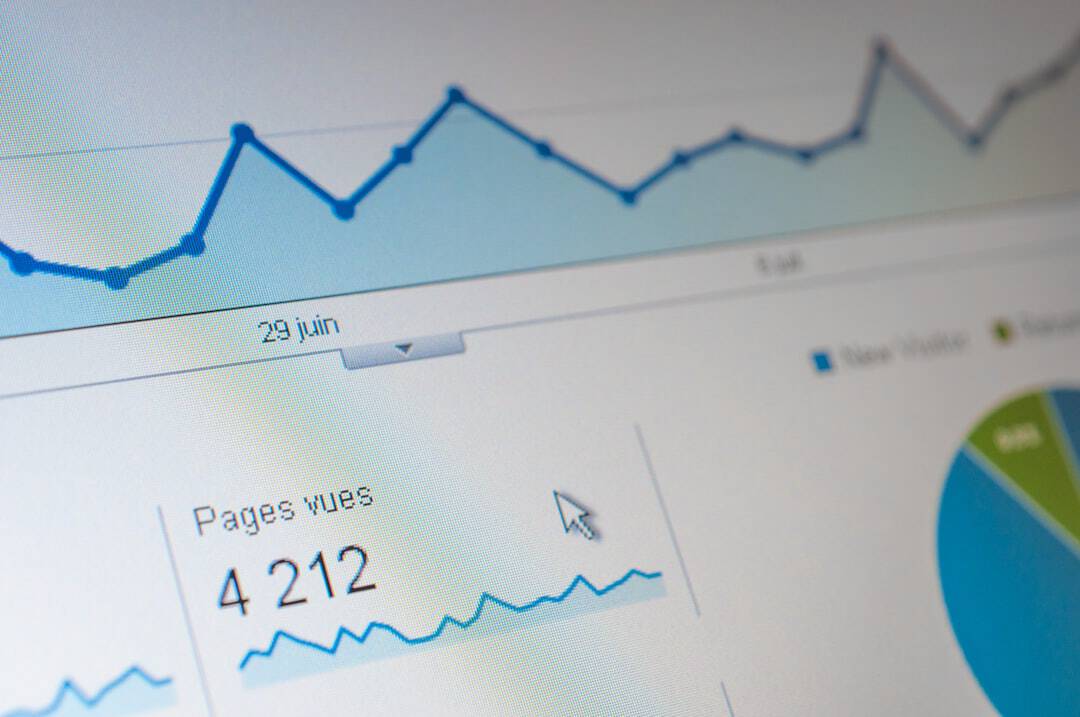In order to obtain insights into consumer behavior, market trends, & brand performance, social media analysis is the methodical process of collecting, analyzing, & interpreting data from social media platforms. This practice tracks important metrics, keeps an eye on social media conversations, and looks for patterns and trends using a variety of tools and methodologies. Businesses & organizations may improve their online presence, assess the results of their social media initiatives, and gain a deeper understanding of their audience by utilizing social media analysis. Sentiment analysis, or figuring out the emotional tenor of posts & comments on social media, is an essential part of social media analysis. Using this method, companies can find possible problems or opportunities as well as gauge how the public feels about their goods and services.
Key Takeaways
- Social media analysis involves examining and interpreting data from social media platforms to gain insights into consumer behavior, market trends, and brand reputation.
- Tools and techniques for social media analysis include social listening tools, sentiment analysis, and data visualization techniques to track and analyze social media conversations and trends.
- Benefits of social media analysis include understanding consumer sentiment, identifying market trends, improving brand reputation, and gaining competitive intelligence.
- Challenges of social media analysis include data privacy concerns, the volume and variety of social media data, and the need for accurate and reliable analysis.
- Best practices for social media analysis include setting clear objectives, using a combination of tools and techniques, and regularly monitoring and adjusting analysis strategies to stay relevant.
- Ethical considerations in social media analysis involve respecting user privacy, ensuring data accuracy, and being transparent about the purpose and methods of analysis.
- Future trends in social media analysis include the use of artificial intelligence and machine learning for more advanced analysis, the integration of social media data with other sources for a more comprehensive view, and the development of ethical guidelines and regulations for social media analysis.
Monitoring social media channels for mentions of a brand, product, or industry-related keywords is known as social listening, and it’s another crucial component. This procedure offers insightful information about competitive intelligence, market trends, and consumer preferences. Social media analysis includes tracking key performance indicators (KPIs) like engagement metrics (likes, shares, comments), reach and impressions, & conversion rates, in addition to sentiment analysis and social listening. Businesses can assess the success of their social media campaigns and optimize their strategies by using data-driven decision-making to analyze these metrics. Gaining a competitive edge in the digital market, bettering marketing tactics, and comprehending consumer behavior are all made possible with the help of social media analysis.
All-inclusive Tools for Social Media Management. Hootsuite is a well-liked tool for social media analysis because it offers a feature-rich dashboard for scheduling posts, tracking various social media channels, and evaluating engagement metrics. Sprout Social is another popular tool for tracking social media performance and evaluating the effectiveness of marketing initiatives. It provides sophisticated analytics and reporting features. Tools Specific to Certain Aspects of Social Media Analysis.
There are specialized tools for particular facets of social media analysis in addition to these comprehensive platforms. Natural language processing algorithms are used by programs such as Brandwatch & Talkwalker to classify social media posts as positive, negative, or neutral in order to perform sentiment analysis. Businesses can track brand mentions and industry keywords in real-time across multiple social media platforms by utilizing social listening tools like Mention and Awario. Monitoring KPIs and Performance on Social Media.
| Metrics | Data |
|---|---|
| Number of social media mentions | 5000 |
| Positive sentiment percentage | 60% |
| Negative sentiment percentage | 20% |
| Neutral sentiment percentage | 20% |
To further track social media KPIs, there are tools made expressly for the purpose, like Buffer, which analyzes post performance and audience engagement, & Google Analytics, which tracks website traffic and conversions. These tools give companies insightful information about how they perform on social media and support them in making data-driven decisions to enhance their online presence. Businesses and organizations wishing to enhance their online presence and marketing tactics can benefit greatly from social media analysis in many ways. The opportunity to obtain insightful knowledge about the preferences and behavior of customers is one of the main advantages. Businesses can uncover emerging trends, learn what resonates with their audience, and better meet customer needs by customizing their content and messaging through the analysis of social media conversations and engagement metrics.
Measuring the effect of marketing initiatives & monitoring return on investment (ROI) are two more advantages of social media analysis. Through the monitoring of crucial indicators like reach, engagement, and conversion rates, companies can evaluate the efficacy of their social media initiatives & make informed decisions to enhance their tactics. This can enhance the efficiency with which companies allocate their resources and raise the general effectiveness of their marketing campaigns. Through the tracking of brand mentions, the monitoring of industry trends, and the identification of possible opportunities & threats, social media analysis can also furnish businesses with competitive intelligence. Businesses can adjust their strategies to stay ahead of the competition by keeping track of what their rivals are doing & how customers are reacting.
All things considered, social media analysis is a potent instrument that companies can use to better understand their target market, enhance their marketing plans, and obtain a competitive advantage in the online market. Although social media analysis has many advantages, businesses must also overcome a unique set of difficulties. The sheer amount of data available on social media platforms is one of the primary obstacles. Businesses often find it difficult to sort through the millions of posts, comments, and interactions that occur every day in order to derive actionable insights.
For the purpose of gathering, processing, and analyzing data, sophisticated tools and methods are needed. The fluidity of social media conversations & trends presents another difficulty. Businesses find it challenging to adapt to the quickly shifting preferences of their customers and the shifting dynamics of the market because what is popular today might not be relevant tomorrow. Because of this, companies must continuously watch social media platforms & modify their plans as needed to remain current and effectively communicate with their audience.
In addition, issues with data privacy and morality arise when analyzing social media. Companies need to make sure that the data collection and analysis they do complies with ethical norms and privacy regulations. Getting users’ consent before collecting personal data, safeguarding sensitive data, and being open & honest about data usage are all examples of this. As a whole, social media analysis presents issues with data volume, shifting trends, & ethical issues that need to be properly handled, even though it also provides useful insights for businesses. Adhering to best practices that guarantee precise data collection, insightful analysis, and ethical considerations is crucial for maximizing the value of social media analysis for business insights. Having well-defined goals and key performance indicators (KPIs) for social media analysis is one recommended practice.
Through the establishment of specific objectives like boosting engagement or enhancing brand sentiment, companies can concentrate their efforts on gathering pertinent data and evaluating the results of their tactics. An additional recommended approach is to conduct a thorough social media analysis using a variety of instruments and methods. This entails employing specialized tools for sentiment analysis and social listening, analytics tools for tracking KPIs, and all-in-one platforms for monitoring various social media channels. Businesses may obtain a comprehensive grasp of their audience, industry trends, and brand performance on social media by utilizing a range of tools and strategies.
Moreover, employing sophisticated algorithms for sentiment analysis and natural language processing is crucial to guaranteeing data dependability and accuracy. Businesses can use this to effectively classify social media posts as neutral, positive, or negative and to obtain insightful information from massive amounts of data. In addition, companies ought to give ethical and data privacy concerns top priority by getting users’ consent before collecting personal information, safeguarding sensitive data, & being open and honest about the use of data.
In general, organizations can optimize the value of their data insights, make wise decisions to enhance their online presence, and uphold ethical standards in data collection and analysis by adhering to best practices for social media analysis. Securing Consent and Safeguarding User Information. Getting users’ consent is essential when gathering personal information from social media platforms. Before collecting any personal information, businesses must obtain users’ explicit consent and communicate the intended use of the data.
By doing this, data collection practices are upheld & user privacy is safeguarded. Protecting Transparency and Security of Data. Through the course of social media analysis, it is imperative to safeguard confidential data and maintain data security. To prevent unauthorized access or misuse of user data, businesses should put strong security measures in place.
To reduce potential risks, this entails encrypting sensitive data, limiting access to authorized personnel only, and routinely upgrading security protocols. Businesses should also make sure that data is used responsibly and be open about how it is used for social media analysis. Sustaining Credibility and Exhibiting Accountability.
Maintaining user trust, upholding privacy rights, & guaranteeing responsible data usage all depend on ethical considerations in social media analysis. Businesses may gain the audience’s trust and show that they are committed to using customer data responsibly by emphasizing ethical standards in data collection & analysis. As part of this, users must be made aware of the purpose of data collection, be given the choice to refuse data collection, and have data insights used to enhance user experience without jeopardizing trust or privacy. Future trends in social media analysis are influencing how businesses gather, examine, and understand data from social media platforms as technology develops. These trends include several emerging trends in social media analysis.
The application of machine learning and artificial intelligence (AI) to sophisticated sentiment analysis is one new trend. Without human assistance, AI-powered systems are able to accurately classify sentiments as positive, negative, or neutral by analyzing vast amounts of unstructured data from social media platforms. An additional emerging trend in social media analysis is the incorporation of virtual reality (VR) & augmented reality (AR) technologies. Through an analysis of user interactions with AR/VR content on social media platforms, businesses can gain immersive insights into consumer behavior through AR/VR technologies. In order to adjust their content strategies appropriately, businesses can benefit from understanding how users interact with branded AR/VR experiences.
In addition, real-time analytics are becoming more and more important for providing immediate insights into social media trends and conversations. Using real-time analytics tools, businesses are increasingly tracking industry keywords, keeping an eye on brand mentions, and spotting emerging trends as they happen. This makes it possible for companies to modify their plans in real time in response to shifting consumer preferences and market conditions. In general, the direction of social media analysis going forward will be to use cutting-edge tools like AI/ML, AR/VR, and real-time analytics to obtain a deeper understanding of consumer behavior, market trends, and brand performance on social media platforms.
Businesses can stay ahead of the curve in terms of audience analysis and successful online presence optimization by adopting these trends.
If you’re interested in the impact of the metaverse on social media sentiment analysis tools, you may want to check out this article on the significance and impact of the metaverse. Understanding the evolution and potential of the metaverse can provide valuable insights into how social media sentiment analysis tools may need to adapt and evolve in the future.
FAQs
A social media sentiment analysis tool is a software or application that uses natural language processing and machine learning techniques to analyze and determine the sentiment expressed in social media posts, comments, and conversations.
A social media sentiment analysis tool works by collecting and analyzing text data from various social media platforms. It uses algorithms to identify and categorize the sentiment expressed in the text as positive, negative, or neutral. This analysis helps businesses and organizations understand public opinion and sentiment towards their brand, products, or services.
Using a social media sentiment analysis tool can help businesses and organizations gain valuable insights into public opinion and sentiment towards their brand, products, or services. It can also help in identifying trends, monitoring brand reputation, and making data-driven decisions for marketing and customer service strategies.
Some common features of a social media sentiment analysis tool include sentiment scoring, trend analysis, real-time monitoring, customizable dashboards, and the ability to track and analyze sentiment across multiple social media platforms.
The accuracy of a social media sentiment analysis tool can vary depending on the quality of the algorithms and the training data used. While no tool can be 100% accurate, many sentiment analysis tools strive to achieve high levels of accuracy through continuous improvement and refinement of their algorithms.











Leave a Reply